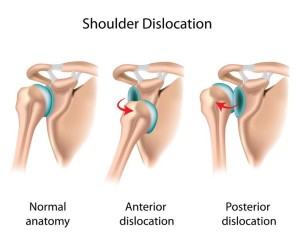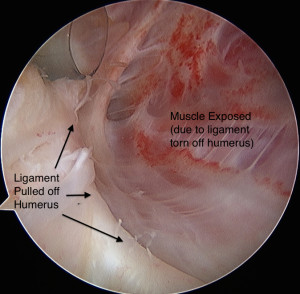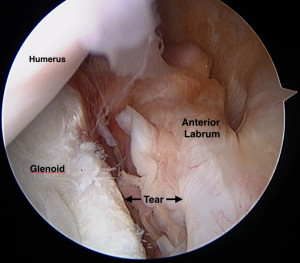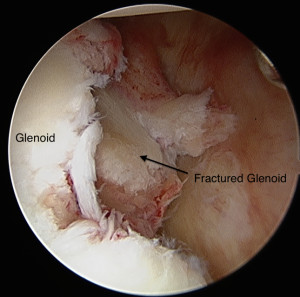Shoulder instability is a common shoulder problem. The shoulder joint is the most mobile of all the major joints. Fortunately, it usually remains stable. At times, however, the shoulder “slips out of the joint.” This is shoulder instability.
Shoulder Instability – Definition
Shoulder instability occurs when there is increased motion between the two primary bones of the shoulder, the humerus and glenoid, and there are symptoms due to this increased movement.
There are several types of shoulder instability.
- Dislocation. The joint becomes completely displaced and often gets locked “out of the joint.”
- Subluxation.The joint is partially out of place. It usually slips back into place on its own.
- Repetitive Micro-instability. The ligaments of the shoulder get stretched out over time.
- Multidirectional Instability. As the name implies, the shoulder is unstable in multiple directions.
There is often some crossover between the various types of instability, and it is common for one patient to have some traits of multiple forms of instability.
Shoulder Instability – Anatomy
The main joint of the shoulder is a ball (humerus) and socket (glenoid) joint. The ball and socket are held together by the matching shape of the bones and cartilage, the strong, thickened tissue (ligaments) connecting the two major bones and the muscles around the shoulder. When one or more of these components are deficient, the joint may become unstable.
Failure of the ligaments is the most common cause of shoulder instability. The ligaments may only stretch out, sustain tears within their mid-substance or pull off the ball or socket.
The insertion of the ligaments on the cup side is called the labrum. Labral tears are a common cause of shoulder instability. The labrum often tears from the bone. After tearing, it can remain near its normal location (non-displaced) or pull away from its usual position (displaced).
The bones of the humerus and glenoid can also be injured (fractured) during an acute instability episode. The bone may also wear down over time from recurrent episodes.
Often some structural issues may exist within any unstable shoulder.
Shoulder Instability – Causes
There are two primary ways shoulder instability can occur – an acute traumatic injury and “wear and tear” over time.
Shoulder dislocations and subluxations are traumatic injuries. There almost always is a discrete memorable event that causes the problem. Common causes are:
- Falls with the arm overhead, out to the side or in front of you.
- Sports injuries such as can occur while tackling, during a blocked shot in basketball or having the shoulder forced into an unnatural position as may occur while wrestling or grappling.
- Violent, traumatic injuries as might occur during a motor vehicle accident, fall from a height or an explosion.
Dislocations and subluxations can be towards the front (anterior) or less commonly towards the back (posterior) of the shoulder.
In the video below, Dwayne Wade dislocates his left shoulder anteriorly (0.20 secs for slow motion view).
Repetitive micro-instability develops over time from participating in activities that often place the shoulder in extremes of motion. Common causes of this type of shoulder instability are pitching, playing volleyball and swimming.
Multidirectional Shoulder Instability occurs in those patients who are born with loose joints (“double jointed”). These people usually have multiple loose joints, not just their shoulders. They can frequently develop symptoms even without sustaining trauma or performing repetitive activities although these may be contributing factors.






